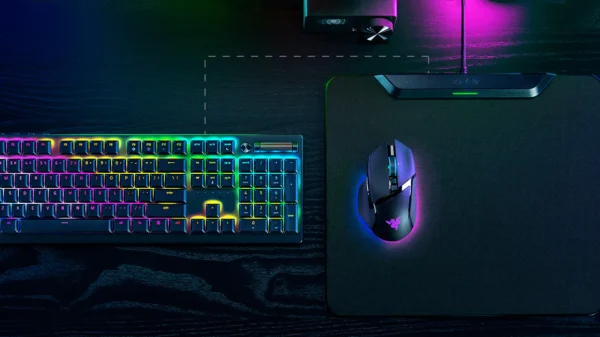3D Printing for Medical Applications: Printed Skin, Bones, Organs, and More
“The Future of Healthcare: How 3D Printing is Reshaping Medicine with Printed Skin, Bones, Organs, and Beyond.”
Key takeaways:
- 3D printing revolutionizes medicine by creating personalized solutions.
- Printed skin improves wound healing and offers custom grafts.
- 3D-printed bones provide personalized implants and address complex cases.
- Bioprinting advances organ transplantation and raises ethical considerations.
- 3D printing aids surgical planning, dental treatments, and drug delivery.
- Challenges include material compatibility, scalability, and costs.
- Innovations hold promise for regenerative medicine and interdisciplinary collaboration.
In the heart of medical innovation, groundbreaking technology is quietly revolutionizing how we approach patient care and treatment. Enter 3D printing, a remarkable advancement that holds the potential to reshape the landscape of medicine as we know it. This cutting-edge technology, also known as additive manufacturing, is no longer confined to creating intricate gadgets or artistic marvels; it has found its place in healthcare, and its impact is nothing short of transformative.
Gone are the days of “one-size-fits-all” medical solutions. With 3D printing, the future of medicine is all about personalization. By employing layer-by-layer deposition of materials, 3D printing allows for the creation of patient-specific medical devices, artificial skin, custom-made bones, and even organs that precisely match the unique needs of each individual. Imagine a world where medical treatments are tailored to fit the exact contours of a patient’s anatomy, recovery is faster, and patient outcomes are dramatically improved. Well, that future is already here.
With every remarkable leap in technology, there come both opportunities and challenges. 3D printing in medical applications is no exception. The advantages, however, are genuinely awe-inspiring. Picture a medical procedure where surgeons utilize 3D-printed models to plan and practice complex surgeries meticulously. This level of precision not only reduces surgery time but also enhances patient safety, ultimately leading to better post-operative results.
Moreover, 3D printing holds enormous potential in tissue engineering, promising advancements in wound healing and burn treatments. Customized 3D-printed skin grafts, tailored to the exact dimensions of a patient’s wound, are a promising solution to promote faster healing and mitigate the risk of graft rejection. As research progresses, the vision of bioprinting organs becomes increasingly tangible, offering hope to those awaiting life-saving transplants.
Yet, as we march towards this promising future, we must address the challenges. Ensuring material biocompatibility and obtaining regulatory approval are paramount to making 3D printing widely accessible and safe for medical use. Moreover, scalability and cost-effectiveness require thoughtful consideration as we seek to expand the reach of this revolutionary technology to as many patients as possible.
3D Printing for Medical Applications: Printed Skin, Bones, Organs, and More
Addressing Wound Healing and Burn Treatment
3D-printed skin emerges as a revolutionary breakthrough in wound healing and burn treatment. Traditional methods often involved skin grafts harvested from other body parts, leading to additional wounds and prolonged recovery. However, with 3D printing, the process becomes remarkably streamlined and patient-centric.
Researchers and medical professionals are harnessing the power of 3D printing to create specialized skin grafts tailored to each patient’s specific needs. Using patient-specific cells and biomaterials, these printed skin grafts closely mimic the natural properties of human skin. When applied to wounds and burns, they promote faster healing and reduce the risk of complications, such as infections and graft rejections.
Beyond the immediate benefits, 3D-printed skin also addresses the shortage of donor tissues. The ability to create skin grafts on demand significantly reduces reliance on donor banks and opens new possibilities for treating large-scale burn injuries and chronic wounds. As this technology continues to evolve, it has the potential to revolutionize the standard of care for patients with skin injuries, transforming their recovery journey and improving their quality of life.
Customized Skin Grafts for Improved Integration
One of the significant challenges in traditional skin grafting is achieving seamless integration between the graft and the recipient’s skin. Mismatched sizes and shapes often result in complications and discomfort for the patient. Enter 3D printing, offering a personalized approach that revolutionizes how skin grafts are designed and implemented.
With advanced 3D scanning techniques, medical professionals can create precise digital models of a patient’s wound or burn. These models serve as the blueprint for crafting customized skin grafts that perfectly fit the contours and dimensions of the injured area. This level of precision ensures better integration and reduces the risk of graft failure, enabling patients to heal more effectively and with reduced scarring.
Moreover, 3D printing allows for incorporating bioactive materials and growth factors into the skin grafts. This feature promotes cell proliferation, collagen production, and vascularization, further accelerating healing. As a result, patients experience improved cosmetic outcomes and enhanced functionality of the healed tissue.
Future Potential in Tissue Engineering
While the current applications of 3D-printed skin focus primarily on wound healing and burn treatment, the future potential of this technology in tissue engineering is nothing short of extraordinary. Scientists and researchers are pushing the boundaries, exploring the development of more complex and multifunctional skin tissues.
Combining various cell types, scaffolds, and bioactive substances makes the vision of creating vascularized 3D-printed skin increasingly plausible. Imagine a world where patients with extensive skin injuries could receive fully functional, lab-grown skin that covers the wound and facilitates blood circulation and nerve regeneration.
Beyond wound healing, 3D-printed skin holds promise in reconstructive surgeries and cosmetic procedures. Patients with congenital defects or traumatic injuries could benefit from personalized skin grafts that restore their appearance and functionality. Additionally, the ability to bioengineer skin with specific properties could lead to advancements in anti-aging treatments, opening new doors in cosmetic dermatology.
As the technology evolves, regulatory approval and safety will be paramount. Nevertheless, the prospects of 3D-printed skin shine bright, offering hope to patients and medical professionals alike in pursuing groundbreaking solutions for a myriad of skin-related challenges.
3D Printed Bones
Personalized Implants and Prosthetics
The world of orthopedics and prosthetics has witnessed a paradigm shift with the advent of 3D-printed bones. Traditionally, patients requiring implants or prosthetic limbs faced limitations in terms of design and fit. Generic implants might not match the unique anatomy of individuals, leading to discomfort and reduced functionality. However, 3D printing has transformed this landscape by enabling the creation of personalized implants and prosthetics.
Advanced medical imaging techniques, such as CT scans, generate precise digital models of a patient’s bone structure. These models are the foundation for designing custom implants that perfectly match the patient’s anatomy. As a result, the fit and function of these 3D-printed implants or prosthetics are significantly improved, enhancing patient mobility and comfort.
Beyond improving the fit, 3D-printed bone implants offer superior material properties. Biocompatible materials, such as titanium and biodegradable polymers, can create implants that seamlessly integrate with the surrounding bone tissue. This not only reduces the risk of complications but also facilitates the regeneration of natural bone, providing long-term support and stability.
Complex Bone Structures and Patient-Specific Solutions
The potential of 3D printing goes beyond simple bone replacements. It empowers medical professionals to create intricate and complex bone structures that were previously unattainable. This technology offers hope for specialized and patient-specific solutions for patients with extensive bone damage due to trauma, tumors, or congenital deformities.
Using additive manufacturing techniques makes it possible to fabricate bone grafts and scaffolds with tailored porosity and surface properties. These personalized structures encourage cell adhesion, proliferation, and tissue integration, promoting natural bone regeneration. Moreover, the ability to print porous structures allows for better vascularization, facilitating nutrient exchange and accelerating the healing process.
3D-printed guides and templates have become invaluable in complex bone surgeries. Surgeons can use these patient-specific guides during intricate procedures, ensuring accurate bone resections and implant placements. This level of precision reduces surgical time and the risk of errors, ultimately leading to better surgical outcomes and improved patient recovery.
Integration with Living Bone Tissue
One of the most exciting aspects of 3D-printed bones is their potential to interact and integrate with living bone tissue. Researchers are exploring bioprinting techniques that combine bioactive materials and living cells to create bone-like structures capable of regeneration and remodeling.
This cutting-edge approach involves seeding scaffolds with bone-forming cells, such as osteoblasts, and using biocompatible materials to promote cell growth and differentiation. The goal is to generate living bone tissues that can be implanted into patients, where they gradually integrate and mature into functional bone.
While still in the early stages of research, this technology holds immense promise for patients with severe bone defects or conditions like osteoporosis. By harnessing the regenerative potential of the patient’s cells, 3D-printed bones may revolutionize the treatment of complex bone injuries, offering long-term solutions that mimic the body’s natural healing processes.
3D Printed Organs
Advancements in Bioprinting Technology
The realm of 3D-printed organs, or bioprinting, represents a pinnacle of medical innovation and a beacon of hope for patients needing organ transplants. Bioprinting involves the layer-by-layer deposition of living cells and biomaterials to fabricate functional tissues and organs. While still in its early stages, the progress made in bioprinting technology is nothing short of astounding.
Researchers and biotechnologists have made significant strides in developing bio-inks—biocompatible materials containing living cells—that can be used in bioprinting. These bio-inks are the building blocks for tissue formation, providing a suitable cell growth and differentiation environment. As a result, complex organs like the liver, kidney, and heart are being replicated with increasing accuracy and functionality.
Moreover, advancements in 3D bioprinters have enabled the simultaneous printing of multiple cell types, mimicking the intricate structures of native organs. Integrating blood vessels and other microstructures within the bio-printed tissues brings these engineered organs closer to their natural counterparts, paving the way for more successful transplants.
Overcoming Organ Transplantation Challenges
The shortage of donor organs for transplantation is a pressing global issue, with thousands of patients awaiting life-saving procedures. 3D-printed organs promise to overcome this challenge and address the organ transplant crisis. By bioprinting organs using a patient’s cells, the risk of rejection is significantly reduced, as the immune system recognizes the tissue as “self.”
Additionally, bio-printed organs can be tailored to match the specific requirements of individual patients. The ability to create personalized organs ensures a precise fit and function, leading to improved transplantation outcomes and patient well-being.
While bioprinting is a potential solution to the organ transplant shortage, significant hurdles remain. The bioprinting process must be refined to achieve the required complexity and functionality of native organs. Long-term viability and maturation of bio-printed tissues remain areas of active research, as does the integration of vascular networks to provide essential nutrients and oxygen to the growing tissues.
Ethical and Regulatory Considerations
As bioprinting advances, it raises important ethical and regulatory considerations. Creating 3D-printed organs using human cells and genetic engineering poses complex questions about the nature of life, consent, and the potential commodification of human body parts.
The ethical implications surrounding using stem cells and human embryos in bioprinting must also be carefully addressed. Striking a balance between scientific progress and ethical boundaries is paramount to ensuring responsible and equitable advancements in this field.
Moreover, regulatory bodies worldwide must establish clear guidelines and standards for the safe and ethical implementation of bioprinting technology. Ensuring the safety, efficacy, and long-term outcomes of 3D-printed organs will be crucial in gaining public trust and acceptance.
Other Medical Applications of 3D Printing
Surgical Planning and Training Models
Beyond its direct impact on patient care, 3D printing has become an invaluable tool in surgical planning and medical training. Medical professionals can now utilize 3D-printed models of a patient’s anatomy to study complex cases and plan intricate surgical procedures with enhanced precision.
Surgeons can examine these physical replicas better to understand the intricacies of a patient’s condition and explore potential surgical approaches before entering the operating room. This level of preparation reduces surgical risks, shortens operation times, and leads to more successful outcomes.
Medical training has also benefited from 3D printing technology. Aspiring surgeons can practice on realistic 3D printed models, simulate different scenarios, and hone their skills in a risk-free environment. This approach improves the proficiency of surgeons-in-training and ultimately elevates the standard of patient care.
Dental Applications and Orthodontics
Dentistry and orthodontics have embraced 3D printing, revolutionizing how dental treatments are designed and implemented. 3D scanning of a patient’s oral cavity allows for creation of accurate digital models, which can be used to fabricate custom dental crowns, bridges, and aligners.
By using 3D printing, dentists can precisely design and manufacture dental prosthetics that fit seamlessly into a patient’s mouth. The improved fit and aesthetics enhance patient comfort and deliver better long-term results.
In orthodontics, 3D printing has transformed the process of creating aligners and retainers. Orthodontists can use 3D scans to design clear aligners that gradually move teeth into their desired positions. This technology streamlines the orthodontic treatment process and provides patients with a more discreet and comfortable alternative to traditional braces.
Drug Delivery and Pharmaceuticals
3D printing has extended its reach into the realm of pharmaceuticals, particularly in drug delivery. Customized drug formulations can be 3D printed to meet the specific needs of individual patients, ensuring accurate dosing and optimal treatment outcomes.
Furthermore, 3D printing enables the fabrication of complex drug delivery devices, such as personalized implants, that release medication at controlled rates. These devices offer targeted drug delivery, reduce side effects, and improve therapeutic efficacy.
The versatility of 3D printing allows for creation of intricate drug delivery systems, such as microscale implants and dissolvable drug-loaded structures. This opens up new possibilities for treating challenging medical conditions, including chronic diseases and cancer.
In conclusion, 3D printing is leaving an indelible mark on the landscape of medicine, offering innovative solutions that extend far beyond skin, bones, and organs. From surgical planning and training models to dental applications and drug delivery, this technology continues to reshape how medical professionals approach patient care.
Current Limitations and Future Directions
Materials and Biocompatibility Issues
While 3D printing holds immense promise in medical applications, there are still challenges related to the materials used. Biocompatibility, the ability of a material to interact with living tissues without causing harm, is of utmost importance in medical settings.
Researchers and engineers continually explore new materials that offer optimal biocompatibility and mechanical properties. Ensuring that the materials used in 3D printing are safe and well-tolerated by the human body is a critical step in advancing this technology for widespread medical use.
Scalability and Cost-effectiveness
The scalability of 3D printing in medical applications remains a concern. Producing 3D-printed medical devices, tissues, and organs on a large scale requires advanced manufacturing processes and efficient production techniques.
Additionally, the cost of 3D printing can be a limiting factor for some medical institutions and patients. As the technology evolves and becomes more accessible, efforts are underway to streamline the production process and reduce the overall cost, making 3D printing a more viable option for healthcare providers and patients.
Innovations on the Horizon
Despite the challenges, an exciting array of innovations is on the horizon. Researchers and industry pioneers are working tirelessly to overcome the limitations of 3D printing and push the boundaries of what is possible.
Advancements in bio-inks, tissue engineering, and bioprinting drive the development of more sophisticated 3D-printed tissues and organs. Integrating stem cells, growth factors, and other biological components into 3D-printed structures opens up new avenues for regenerative medicine and personalized treatments.
Moreover, 3D printing is converging with other cutting-edge technologies, such as artificial intelligence and nanotechnology, to create hybrid solutions with unprecedented capabilities. These synergies can potentially revolutionize diagnostics, drug discovery, and disease treatment, propelling medical science into uncharted territories.
The Impact of 3D Printing on Healthcare
Improved Patient Outcomes and Quality of Life
As 3D printing technologies mature and find broader medical applications, the impact on patient outcomes and quality of life is profound. Personalized medical solutions, such as 3D-printed implants and organs, offer a higher chance of success in surgeries and treatments. Patients experience reduced risks of complications and faster recovery times, ultimately leading to improved overall well-being.
Shaping the Future of Medicine and Patient Care
3D printing is reshaping the landscape of medicine and patient care, empowering healthcare providers with innovative tools and approaches. Creating patient-specific models, devices, and tissues enhances diagnostic accuracy and therapeutic effectiveness.
Furthermore, 3D printing fosters collaboration between medical professionals, researchers, and engineers. This interdisciplinary cooperation is accelerating the pace of medical advancements, pushing the boundaries of what is possible in the quest to improve human health and well-being.
Collaboration between 3D Printing and Medical Communities
The successful integration of 3D printing into medical practice relies on close collaboration between the 3D printing industry and the medical community. Healthcare professionals and researchers are pivotal in identifying unmet medical needs and providing valuable insights for developing tailored solutions.
In turn, the 3D printing industry must actively engage with the medical community to understand healthcare applications’ specific challenges and requirements. Together, this partnership can drive the development of innovative technologies that revolutionize patient care and transform the future of medicine.
Conclusion
The journey through the world of 3D printing for medical applications has been nothing short of extraordinary. From the remarkable advancements in printed skin, offering hope to patients with burns and chronic wounds, to the personalized implants and prosthetics that enhance mobility and quality of life, 3D printing is transforming the healthcare landscape.
The realm of 3D-printed organs, with its potential to address the organ transplant crisis and save countless lives, holds the promise of a future where waiting lists become a thing of the past. As bioprinting technology advances and ethical considerations are carefully navigated, we inch closer to a world where organs are not merely donated but printed on demand.
The impact of 3D printing extends far beyond individual medical applications. The technology’s role in surgical planning, medical training, dental applications, and drug delivery is revolutionizing how medical professionals approach their craft. With 3D printing, the potential for customized and patient-centric care is becoming an everyday reality.
As we move forward, it is essential to address the current limitations of 3D printing, such as material and biocompatibility challenges, scalability, and cost-effectiveness. By investing in research and fostering collaboration between the 3D printing industry and the medical community, we can overcome these hurdles and unlock even greater possibilities.
The future of 3D printing in medicine holds untold promise. The convergence of 3D printing with other cutting-edge technologies and the potential for hybrid solutions has the potential to push the boundaries of medical science and redefine the future of healthcare.
3D printing has changed the face of medicine and sparked a powerful transformation in how we approach patient care and treatment. The fusion of technology, innovation, and human compassion is paving the way for a new era of personalized and efficient healthcare, where every patient’s needs are met with precision and dedication.
In the coming years, as 3D printing technology continues to evolve, the world of medicine will undoubtedly witness even more remarkable breakthroughs. As we embrace this future with open arms, we must remain steadfast in our commitment to ethical, responsible, and equitable advancements in 3D printing for the betterment of humanity’s health and well-being.
In this journey of healing, innovation, and hope, the canvas of 3D printing in medical applications will paint a brighter and more promising future for patients worldwide. As we take each step forward, the vision of personalized, efficient, and transformative healthcare becomes more within reach. The story of 3D printing in medicine is one of collaboration, dedication, and the relentless pursuit of progress, and its impact will be etched in the annals of medical history for generations to come.







































